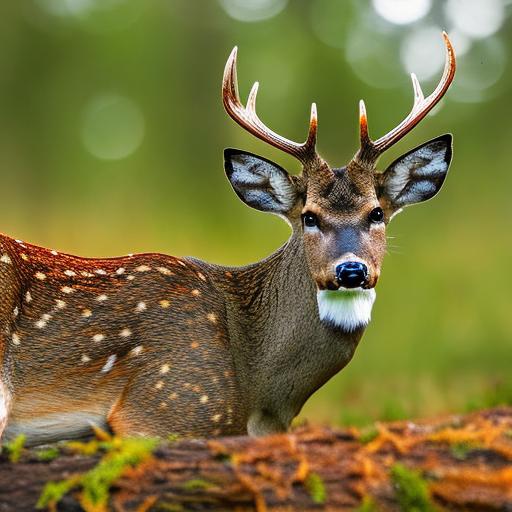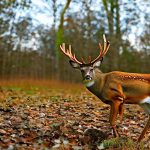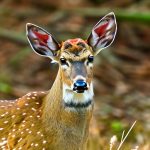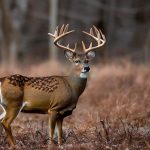Your cart is currently empty!

deer hunting journal

Deer hunting is a popular and thrilling outdoor activity that requires skill, patience, and preparation. Whether you are a seasoned hunter or a beginner, keeping a deer hunting journal can greatly enhance your hunting experience. In this blog post, we will explore the importance of keeping a deer hunting journal and provide a comprehensive guide for hunters.
Keeping a deer hunting journal serves multiple purposes. Firstly, it allows you to document your hunting experiences and memories. Each hunt is unique and special, and by recording your thoughts, observations, and emotions, you can relive those moments in the future. Additionally, a hunting journal can serve as a valuable resource for learning and improving your hunting skills. By analyzing your past hunts, you can identify patterns, strategies, and techniques that have worked well for you. This knowledge can be applied to future hunts to increase your chances of success.
Key Takeaways
- A deer hunting journal can be a valuable tool for hunters to track their experiences and improve their skills.
- Proper preparation, including obtaining licenses and safety gear, is crucial for a successful and safe hunt.
- When choosing a hunting spot, factors such as terrain, weather, and animal behavior should be considered.
- Tracking and scouting techniques, such as identifying signs of deer activity, can increase the chances of a successful hunt.
- Strategies for bagging a deer include using scent control, staying still and quiet, and being patient.
Preparing for the Hunt: Gear, Licenses, and Safety Tips
Before embarking on a deer hunting adventure, it is essential to gather the necessary gear and obtain the required licenses. Some essential hunting gear includes a firearm or bow, ammunition or arrows, appropriate clothing for the weather conditions, binoculars or a scope for spotting deer from a distance, a backpack to carry supplies, and a knife for field dressing the deer. It is important to invest in high-quality gear that is reliable and durable.
Obtaining the proper licenses is crucial to ensure that you are hunting legally and responsibly. Hunting regulations vary from state to state, so it is important to familiarize yourself with the specific requirements of your area. Most states require hunters to complete a hunter education course before obtaining a license. These courses provide valuable information on safety practices, hunting ethics, and wildlife conservation.
Safety should always be a top priority when participating in any outdoor activity, especially hunting. Some important safety tips for hunters include always treating firearms as if they are loaded, never pointing a firearm at anything you do not intend to shoot, keeping your finger off the trigger until you are ready to shoot, and being aware of your surroundings at all times. It is also important to wear appropriate safety gear, such as blaze orange clothing, to ensure that you are visible to other hunters.
Choosing the Right Hunting Spot: Factors to Consider
Choosing the right hunting spot is crucial for a successful hunt. There are several factors to consider when selecting a hunting spot. Firstly, you should consider the deer population in the area. Look for signs of deer activity, such as tracks, droppings, and rubs on trees. Additionally, consider the availability of food sources, such as acorns or agricultural fields, as deer are more likely to frequent areas with abundant food.
Another important factor to consider is the terrain of the hunting spot. Look for areas with natural features that provide cover for deer, such as thickets or creek bottoms. Deer are more likely to feel safe and comfortable in these areas. Additionally, consider the wind direction and prevailing weather conditions when choosing a hunting spot. Deer have a keen sense of smell and will be able to detect your scent if you are upwind from them.
Scouting potential hunting locations is an important step in choosing the right hunting spot. Spend time in the area before the hunting season begins to observe deer behavior and patterns. Look for trails or travel corridors that deer use frequently. Set up trail cameras to capture images of deer in the area and gather valuable information about their movement patterns. By scouting potential hunting locations, you can increase your chances of encountering deer during your hunt.
Tracking and Scouting Techniques for Successful Hunts
Tracking deer is an essential skill for successful hunts. When tracking deer, it is important to look for signs of their presence, such as tracks, droppings, rubs, and scrapes. Tracks can provide valuable information about the size and direction of the deer. Fresh droppings indicate recent deer activity in the area. Rubs are made by bucks rubbing their antlers on trees to mark their territory, while scrapes are made by bucks pawing the ground and urinating to communicate with other deer.
Scouting is another important technique for successful hunts. By observing deer behavior and patterns, you can gain valuable insights into their movement and feeding habits. Look for areas with abundant food sources, such as agricultural fields or oak trees. Set up trail cameras to capture images of deer in the area and gather information about their movement patterns. By scouting potential hunting locations, you can increase your chances of encountering deer during your hunt.
The Thrill of the Hunt: Strategies for Bagging a Deer
Deer hunting requires a combination of skill, patience, and strategy. There are several strategies that can increase your chances of bagging a deer. Firstly, it is important to be familiar with the area you are hunting in. Spend time scouting potential hunting locations before the hunting season begins to observe deer behavior and patterns. Look for signs of deer activity, such as tracks, droppings, and rubs on trees.
Another strategy for successful deer hunting is to use calls and scents to attract deer. Calls, such as grunt calls or rattling antlers, can mimic the sounds that deer make during the rutting season and attract bucks to your location. Scents, such as doe urine or buck urine, can also be used to lure deer closer to your hunting spot.
Patience is key when it comes to deer hunting. It is important to stay still and quiet for long periods of time, as deer have keen senses and can detect even the slightest movement or noise. Find a comfortable spot to sit or stand and be prepared to wait for extended periods of time. Remember that deer are most active during dawn and dusk, so plan your hunts accordingly.
Field Dressing and Processing Your Deer: Tips and Tricks
Field dressing a deer is an important step in the hunting process. Field dressing involves removing the internal organs of the deer to preserve the meat and make it easier to transport. It is important to field dress the deer as soon as possible after harvesting it to prevent spoilage.
To field dress a deer, start by making a small incision in the abdomen, just below the rib cage. Be careful not to puncture any of the internal organs. Use a sharp knife to carefully cut through the skin and muscle, working your way down towards the pelvis. Once you have reached the pelvis, use a saw or bone saw to cut through the pelvic bone and remove the lower half of the deer.
After removing the lower half of the deer, carefully remove the internal organs, being careful not to puncture them. Cut around the anus and genitals, being careful not to puncture the bladder or intestines. Once you have removed all of the internal organs, rinse out the cavity with cold water to remove any blood or debris.
Once you have field dressed the deer, it is important to process and prepare the meat properly. Start by removing any excess fat or connective tissue from the meat. Cut the meat into manageable pieces, such as steaks or roasts, and package them for storage or immediate consumption. It is important to keep the meat cool during this process to prevent spoilage.
Recipes and Cooking Tips for Venison
Venison, or deer meat, is a lean and flavorful meat that can be used in a variety of delicious recipes. There are several cooking methods that can be used to prepare venison, including grilling, roasting, stewing, and sautéing. Here are a few delicious recipes for cooking venison:
– Grilled Venison Steaks: Marinate venison steaks in a mixture of olive oil, soy sauce, garlic, and herbs for at least 30 minutes. Preheat a grill to medium-high heat and grill the steaks for 4-5 minutes per side, or until desired doneness.
– Venison Roast: Rub a venison roast with a mixture of salt, pepper, garlic powder, and herbs. Place the roast in a roasting pan and cook in a preheated oven at 325°F for 20 minutes per pound, or until the internal temperature reaches 145°F for medium-rare.
– Venison Stew: Cut venison into bite-sized pieces and brown in a large pot with olive oil. Add onions, carrots, potatoes, and your choice of vegetables to the pot. Season with salt, pepper, and herbs. Add beef broth and simmer for 2-3 hours, or until the meat is tender.
When cooking venison, it is important to remember that it is a lean meat and can easily become dry if overcooked. It is best to cook venison to medium-rare or medium doneness to preserve its tenderness and flavor. Additionally, marinating the meat before cooking can help to tenderize it and add flavor.
Storing and Preserving Your Venison: Long-Term Storage Options
Properly storing and preserving your venison is essential to ensure that it stays fresh and flavorful for an extended period of time. There are several long-term storage options for venison, including freezing, canning, and drying.
Freezing is the most common method of storing venison. To freeze venison, wrap it tightly in plastic wrap or aluminum foil to prevent freezer burn. Place the wrapped meat in a freezer bag or vacuum-sealed bag to further protect it from freezer burn. Label the package with the date and type of meat and store it in the freezer at 0°F or below. Venison can be stored in the freezer for up to one year.
Canning is another method of preserving venison. To can venison, cut the meat into small pieces and pack it into sterilized canning jars. Add salt or other seasonings, if desired. Process the jars in a pressure canner according to the manufacturer’s instructions. Canned venison can be stored in a cool, dark place for up to one year.
Drying is a traditional method of preserving venison. To dry venison, cut the meat into thin strips and hang them in a well-ventilated area. The meat should be protected from insects and dust. Allow the meat to dry for several weeks, until it is firm and leathery. Dried venison can be stored in an airtight container in a cool, dark place for several months.
Deer Hunting Ethics and Conservation: Responsible Hunting Practices
Deer hunting ethics and conservation are important aspects of responsible hunting practices. It is important for hunters to follow ethical guidelines to ensure the sustainability of deer populations and preserve the natural balance of ecosystems.
Responsible hunting practices include obeying all hunting laws and regulations, obtaining the necessary licenses and permits, and respecting private property rights. It is important to hunt within designated hunting seasons and bag limits to prevent overharvesting of deer populations. Additionally, hunters should practice fair chase, which means giving deer a fair chance to escape and not using unfair advantages, such as baiting or spotlighting.
Conservation efforts are crucial for maintaining healthy deer populations and preserving their habitats. Hunters can contribute to conservation efforts by supporting organizations that work to protect wildlife habitats, participating in habitat restoration projects, and reporting any illegal hunting activities or wildlife violations they witness.
Reflecting on the Hunt: The Importance of Keeping a Deer Hunting Journal
Keeping a deer hunting journal is a valuable practice that can enhance your hunting experience in many ways. Firstly, it allows you to document your hunting experiences and memories. Each hunt is unique and special, and by recording your thoughts, observations, and emotions, you can relive those moments in the future. Additionally, a hunting journal can serve as a valuable resource for learning and improving your hunting skills. By analyzing your past hunts, you can identify patterns, strategies, and techniques that have worked well for you. This knowledge can be applied to future hunts to increase your chances of success.
A deer hunting journal can also help you track your progress as a hunter. By recording details such as the number of deer seen, shots taken, and successful harvests, you can measure your success over time. This can be especially helpful for beginners who are just starting out and want to track their improvement.
Starting and maintaining a hunting journal is simple. All you need is a notebook or journal and a pen or pencil. Before each hunt, take a few minutes to write down your goals for the day, any observations or predictions about deer behavior, and any other relevant information. After the hunt, take some time to reflect on the experience and record your thoughts and observations. Be sure to include details such as the weather conditions, the location of the hunt, the time of day, and any other factors that may have influenced the hunt.
In conclusion, keeping a deer hunting journal is a valuable practice that can greatly enhance your hunting experience. It allows you to document your hunting experiences and memories, learn from past hunts, track your progress as a hunter, and improve your skills over time. By following the tips and guidelines provided in this blog post, you can start and maintain a deer hunting journal that will serve as a valuable resource for years to come. Happy hunting!
If you’re an avid hunter looking to expand your skills beyond deer hunting, you might be interested in our related article on “How to Hunt Rabbits with a .22.” This informative piece from Old Oak Syndicate provides valuable tips and techniques for successfully hunting rabbits using a .22 caliber rifle. Whether you’re a beginner or an experienced hunter, this article offers insights on tracking, stalking, and bagging rabbits effectively. Check it out here to enhance your hunting repertoire.
FAQs
What is a deer hunting journal?
A deer hunting journal is a record-keeping tool used by hunters to document their hunting experiences, including details about the location, weather, and wildlife encountered during each hunt.
Why do hunters keep a deer hunting journal?
Hunters keep a deer hunting journal to track their progress, learn from their experiences, and improve their hunting skills. It also helps them remember important details about each hunt, such as the location of a successful hunting spot or the behavior of a particular deer.
What information should be included in a deer hunting journal?
A deer hunting journal should include the date and location of each hunt, the weather conditions, the type of terrain, and any wildlife encountered. It should also include details about the hunter’s equipment, such as the type of gun or bow used, and any modifications made to it.
How can a deer hunting journal help improve hunting skills?
By keeping a deer hunting journal, hunters can identify patterns in their hunting experiences and adjust their strategies accordingly. For example, if they consistently encounter deer in a certain area, they may choose to focus their hunting efforts there. They can also use their journal to track their success rates and identify areas where they need to improve.
What are some tips for keeping a deer hunting journal?
Some tips for keeping a deer hunting journal include being consistent with entries, using descriptive language to capture the details of each hunt, and including sketches or maps of the hunting area. It’s also important to review the journal regularly and use the information to make informed decisions about future hunts.

Herb has been a longtime lover of the outdoors. Whether it be hunting, camping, fishing or just getting outside to reset. Proud father and animal lover. Bourbon anyone?

by
Tags:
Comments

Categories
- Big Game Hunting (301)
- Deer (202)
- Reviews (3)
- Shooting (16)
- Slingshot (1)
- Small Game Hunting (42)
- Upland Hunting (126)
- Waterfowl Hunting (3)





Leave a Reply